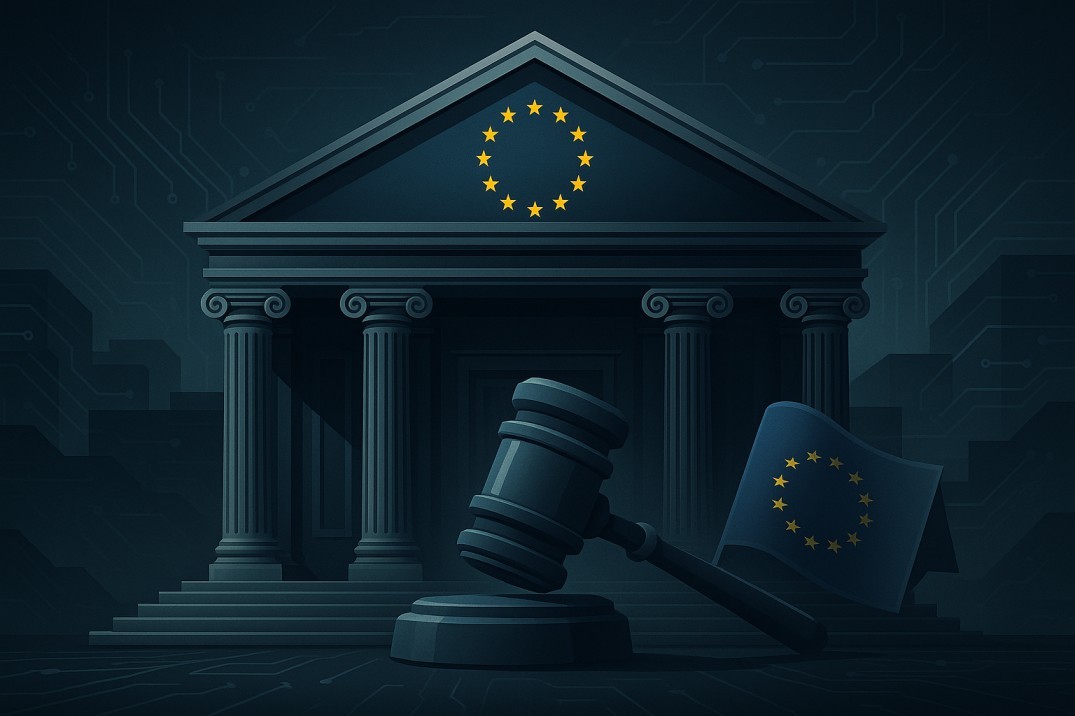TL;DR
- EU AI Act classifies systems handling sensitive data as high‑risk, placing new duties on providers like OpenAI.
- ChatGPT use in crypto or KYC workflows may face stricter rules in Europe.
- Users may have clearer rights over how their data is processed.
- Providers will need better transparency and compliance to keep services running smoothly.
- Whether you're in Europe or elsewhere, these shifts push for safer, more user‑centric AI.
Regulation has finally caught up with AI. The EU’s AI Act greenlit by the European Parliament in May 2024, sets a global precedent. It targets systems that analyze user data in ways that influence behavior or automate decisions, covering everything from CV reviews to ChatGPT prompts involving personal or financial info .
If you've used ChatGPT to discuss your crypto portfolio or verify identity documents, you’re in the high‑risk category. That comes with new safeguards, some good, some potentially inconvenient.
Breaking Down the EU AI Act

The EU's Artificial Intelligence Act is the world's first comprehensive legal framework designed to govern how AI is developed and used. It passed its final vote in May 2024 and will take effect in phases through 2025 and 2026. The law is structured around risk categories , with different obligations depending on how the AI is used.
Unacceptable Risk
AI systems that pose a clear threat to safety or fundamental rights are banned entirely.
Examples:
- Social scoring systems (like China's state ranking system)
- Real-time biometric surveillance in public spaces
- Emotion recognition in workplaces or schools
High Risk
These are applications that could impact people's lives or freedoms especially in areas like finance, health, or law enforcement. They're not banned, but developers must follow strict rules.
Examples:
- Credit scoring tools
- Medical diagnostic AI
- AI used in border control or hiring processes
Requirements include:
- Robust data governance
- Transparency reports
- Human oversight
- Clear documentation for regulators
Limited Risk
AI that interacts with people but doesn't make major decisions needs to follow transparency rules.
Example:
- Chatbots like ChatGPT
- Image generation tools
Under the Act, these must clearly disclose that users are speaking to or using AI. You'll start seeing more “This is an AI system” notices across websites and apps.
Minimal Risk
This includes most AI used for spam filters, video games, or basic automation. These tools remain mostly unregulated.
General Purpose AI
The Act also introduces a special category for General-Purpose AI (GPAI) like ChatGPT and Claude. Even if a tool wasn't designed for a high-risk purpose, it's still covered if it's powerful enough to be adapted to one.
Under this rule, companies like OpenAI must:
- Share summaries of training data
- Register with the EU database
- Perform regular safety evaluations
- Ensure “reasonable certainty” that the model won’t be misused
The goal is to build trust through transparency and accountability. And while the law starts in the EU, it's likely to influence how AI is handled worldwide.
How This Affects ChatGPT Users with Crypto or KYC Content
If you ask ChatGPT about crypto addresses, private keys, KYC documents or identity data, these interactions now fall within the EU's new legal framework. High-risk classifications require providers to document how data is sourced, how outputs are checked, and show oversight protocols. Even casual users may see notices like “You’re using an AI system, this is transparency under EU law.”
That means interfaces may add disclaimers, data‑usage reports, or explicit actions like “Delete your session history on request.” Chatbot developers are legally required to let you know what’s happening.
What It Means for Crypto Users
If you input wallet metadata or identity data into ChatGPT or tools offering crypto advice, platforms might require permission prompts or black-boxed processing to avoid storing sensitive inputs. That helps with GDPR and crypto‑related privacy concerns.
Some providers may build dedicated compliance flows ensuring your KYC or transaction details are never logged beyond ephemeral memory.
What Changes You May See as a User
Major updates may include:
- More visible disclosures: you might see pop-ups reminding you you’re chatting with an AI.
- Training data transparency: summary pages on what data your specific version was trained on.
- Logs and oversight: protocols allowing regulators to audit how responses were generated.
- Incident reporting: systems that report serious safeties or bias failures automatically.
For crypto apps that integrate ChatGPT or similar, providers may ask for explicit consent before sharing KYC or wallet data.
EU‑Style Rules May Shape Global Standards
While these rules are EU‑centric, global AI platforms usually unify product compliance to match highest standards. That means users in other regions including the US may get the same transparency features.
Experts note this pattern mirrors GDPR: first panic, then auditing norms, and eventually global adoption.
Final Thought
EU regulation is shifting how users and companies interact with advanced AI tools. ChatGPT and similar systems must become more open about how they work and handle data. That shift is likely to spill beyond Europe, reshaping user expectations globally especially for anyone using AI to discuss crypto, KYC, or identity data.
The EU AI Act is a turning point. It forces a shift from opaque AI systems to tools that respect user rights even if that means more complexity under the hood. For users, It's a win, more clarity, more control, more trust.











